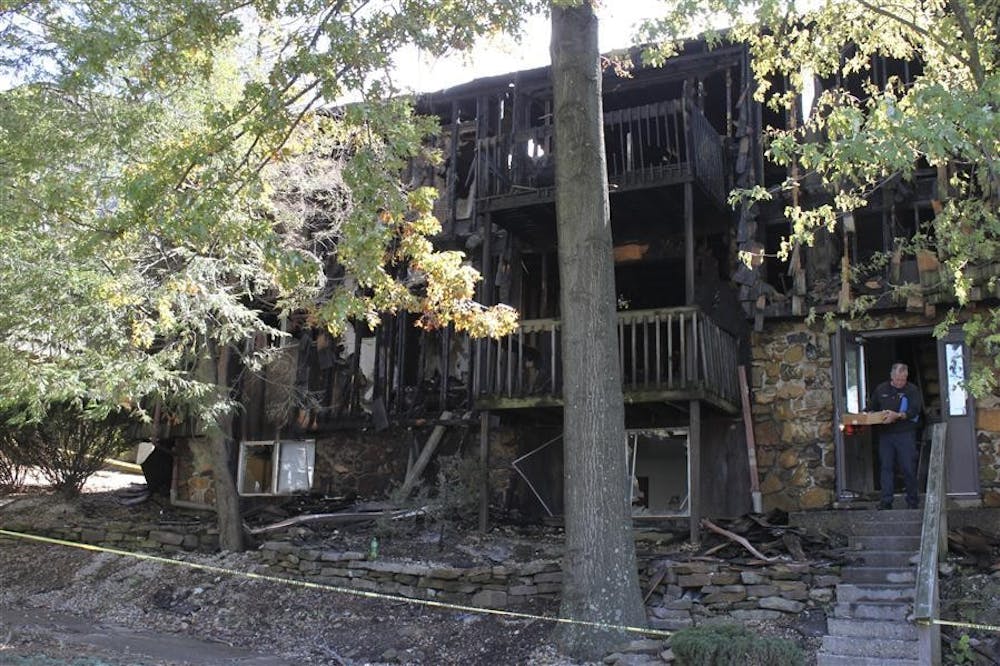Investigations into the fire that claimed the life of IU freshman Renee Ohrn are ongoing, Terra Trace owner Maribeth Coller said Tuesday.
The Bloomington Fire Department released the results of its official investigation Thursday, but Terra Trace management has hired a private investigations firm — Midwest Forensics of Indianapolis — to conduct a more thorough search for the cause of the fire.
The BFD report found the source of the fire was near a ceiling light in apartment D8, the apartment below the one in which Ohrn was found, and two breakers labeled “fire alarm” in a locked electrical panel in a public area of the apartment were in the off position.
Coller said this report was the first she had heard of the breakers and that their private investigator disagreed with many of BFD’s findings.
“The fire department is great at what they do, putting out fires, but they don’t do investigations often,” Coller said. “All I’m saying is what’s in that report isn’t necessarily the final word.”
The case has also received national attention from fire safety advocates. Deputy Chief of the Boston Fire Department Jay Fleming has worked for many years advocating for photoelectric smoke detectors, rather than the more common ionization detectors that often lead to faulty alarms.
“The photoelectric is really good at detecting average or big particle smoke,” Fleming said. “Ionization is really bad at finding big particles.”
Ionization alarms, which use a small amount of radiation to find small particulate matter in the air, are good at detecting flaming fires that produce little smoke, but they can also be triggered by steam from cooking or a hot shower.
Photoelectric alarms, on the other hand, use light readings to find thick smoke, the kind found in smoldering fires like the one that began at Terra Trace apartments.
Coller said she did not know if the alarms in building D were ionization or photoelectric, but other detectors in the apartment complex are ionization detectors.
Fleming said he files hundreds of official complaints with the United States Consumer Product Safety Commission every year against ionization detectors, but none have been investigated by the agency.
He recently submitted a similar complaint citing the Terra Trace fire and Ohrn’s death against ionization detectors.
According to the BFD report, the smoke detector in apartment D9 where Ohrn was found was removed the day before “because it had been going off and was annoying.” Fleming said the number of annoying alarms are greatly reduced when using photoelectric detectors rather than ionization detectors.
“Since approximately 20 percent of the fatalities that occur every year have disabled alarms, it is not unreasonable to assume that education of the public about the benefit of photoelectric technology to reduce nuisance alarms could save hundreds of lives each year,” Fleming said in his complaint.
According to the electronic newsletter Campus Firewatch, Ohrn’s death is the first U.S. fire-related death on or near a college campus for the 2011-12 academic year. Nationwide, six students died in fires on or near college campuses last year.
Coller said the investigation is far from over, as there will be a continued look into what caused the fire and what happened to the alarms.
“It’s all a really confusing issue,” Coller said. “We all want to get to the bottom
of this.”
Investigation continues into Terra Trace fire
Boston deputy fire chief uses Bloomington fire to promote fire alarm safety nationwide

Get stories like this in your inbox
Subscribe





